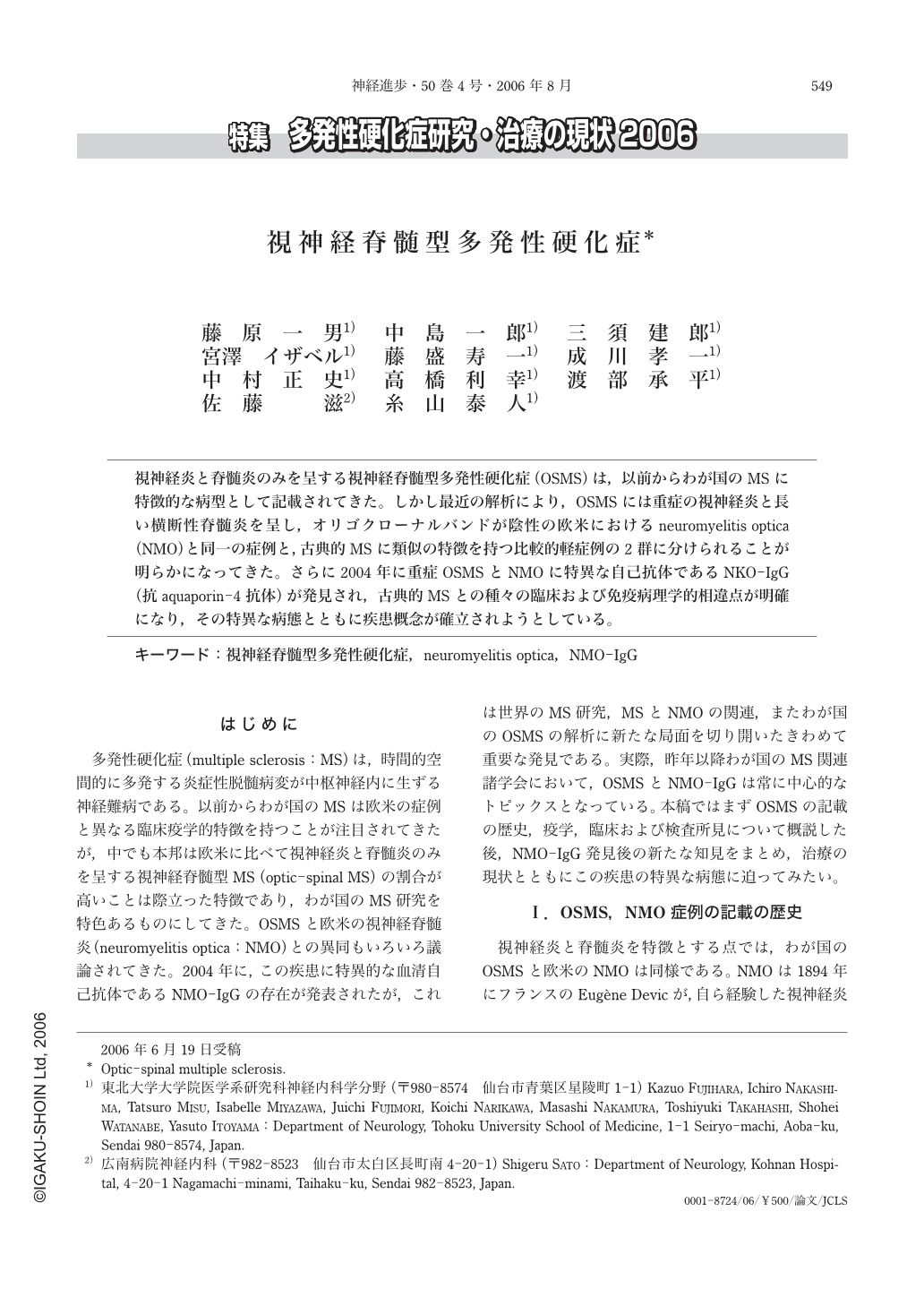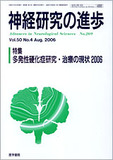Japanese
English
- 有料閲覧
- Abstract 文献概要
- 1ページ目 Look Inside
- 参考文献 Reference
視神経炎と脊髄炎のみを呈する視神経脊髄型多発性硬化症(OSMS)は,以前からわが国のMSに特徴的な病型として記載されてきた。しかし最近の解析により,OSMSには重症の視神経炎と長い横断性脊髄炎を呈し,オリゴクローナルバンドが陰性の欧米におけるneuromyelitis optica(NMO)と同一の症例と,古典的MSに類似の特徴を持つ比較的軽症例の2群に分けられることが明らかになってきた。さらに2004年に重症OSMSとNMOに特異な自己抗体であるNKO-IgG(抗aquaporin-4抗体)が発見され,古典的MSとの種々の臨床および免疫病理学的相違点が明確になり,その特異な病態とともに疾患概念が確立されようとしている。
Optic-spinal multiple sclerosis(OSMS), which is characterized by the selective involvement of the optic nerves and spinal cord, has been described as a subtype of MS commonly seen in Japan. However, recent analyses in Japanese OSMS have revealed that OSMS is classified into two subtypes, 1)neuromyelitis optica(NMO)and 2)MS with optic-spinal presentation. In NMO, optic neuritis is often severe and bilateral, and myelitis is longitudinally extensive(<3 vertebral segments)and transverse, which are seldom seen in classical MS. Oligoclonal IgG bands(OB)are negative in this subtype. Meanwhile, in MS with optic-spinal presentation, the disability is milder, and long spinal cord lesions are uncommon. Moreover, HLA-DR2 associated with classical MS is often positive in MS with optic-spinal presentation, and some of the patients are OB-positive. Recently, NMO-IgG(anti-aquaporin-4 antibody)specific to severe OSMS and NMO was discovered, and the various clinical and immuno-pathological features of the unique clinical entity, which are distinct from those in classical MS, have been elucidated.

Copyright © 2006, Igaku-Shoin Ltd. All rights reserved.


